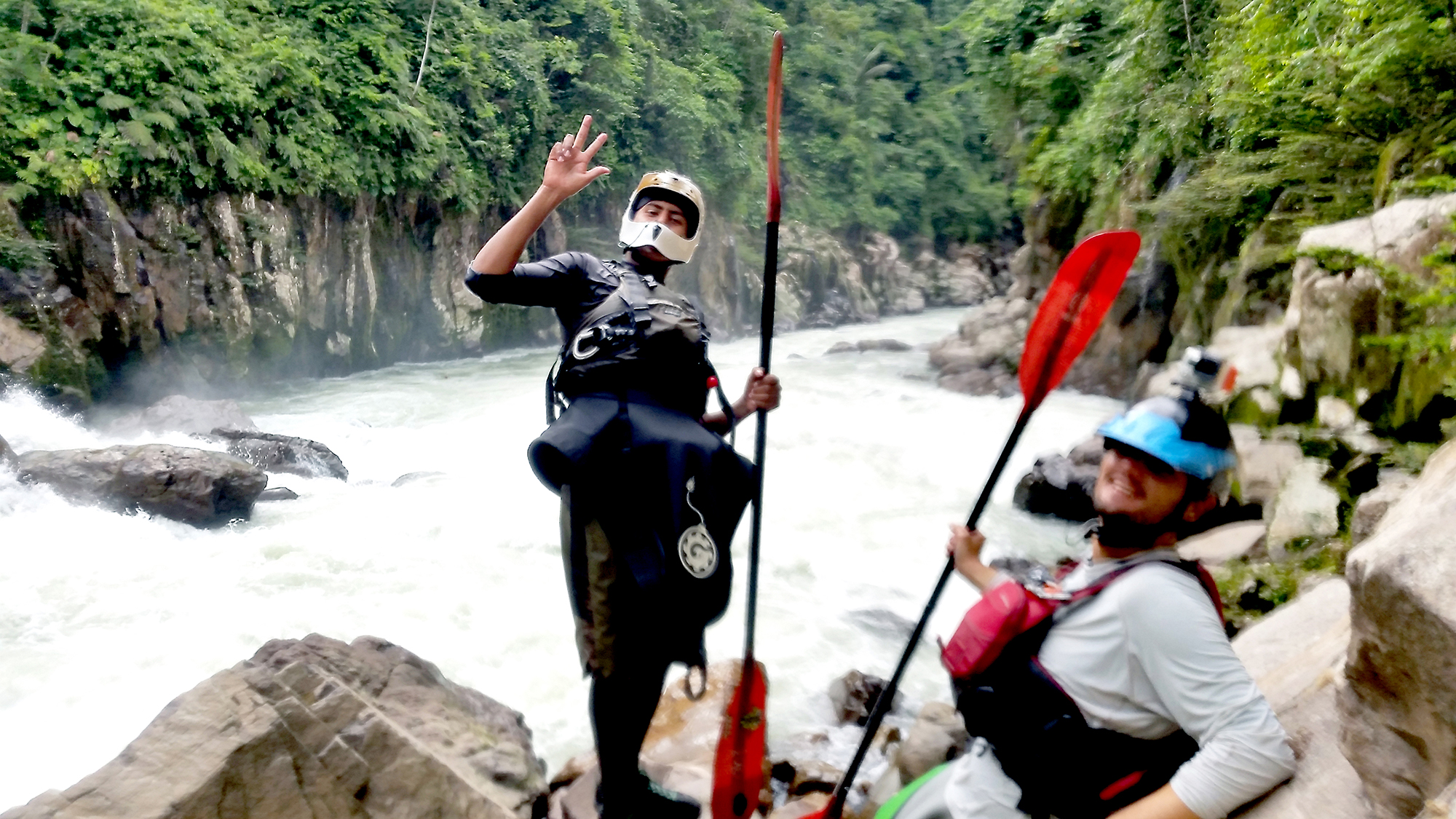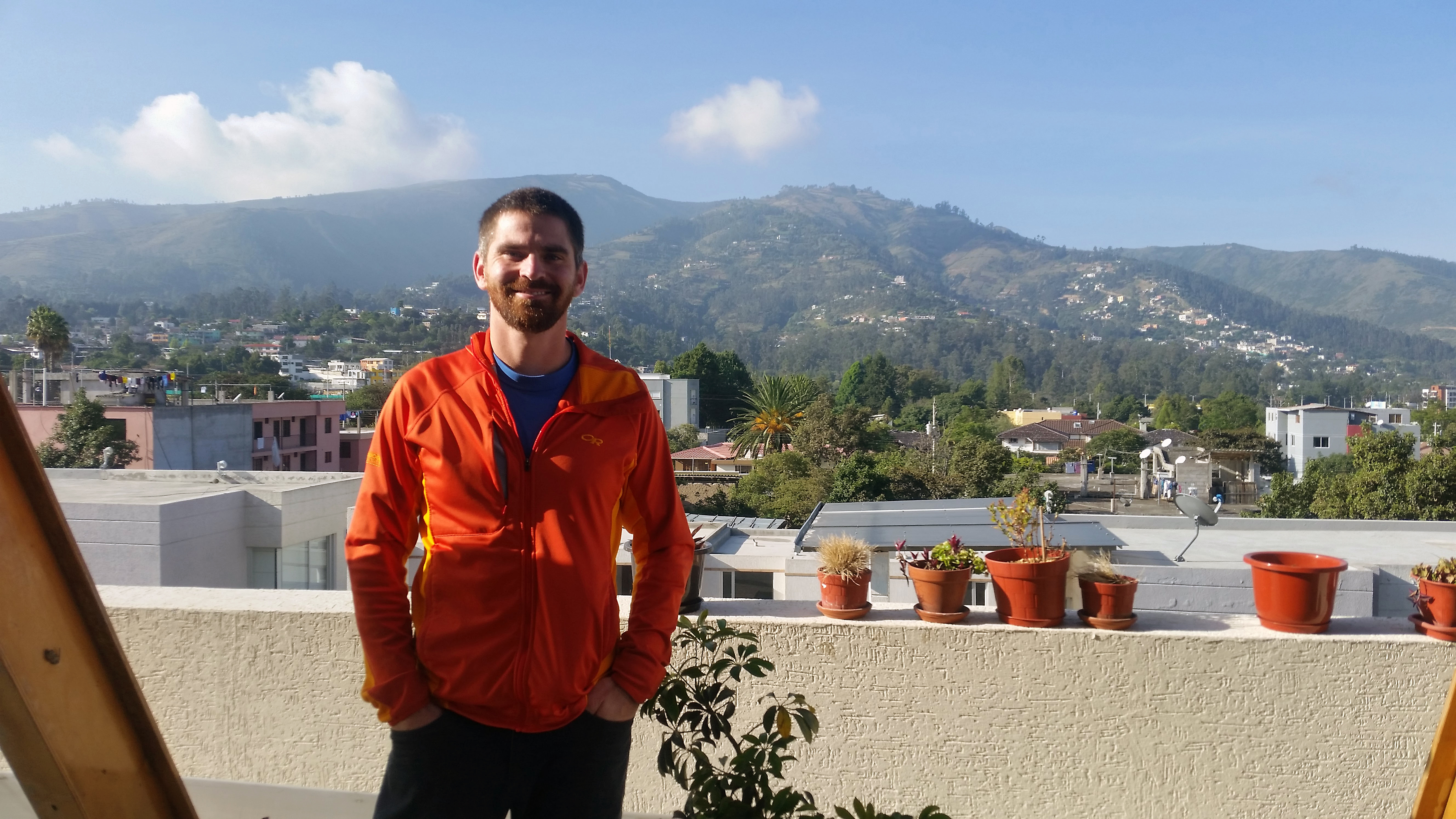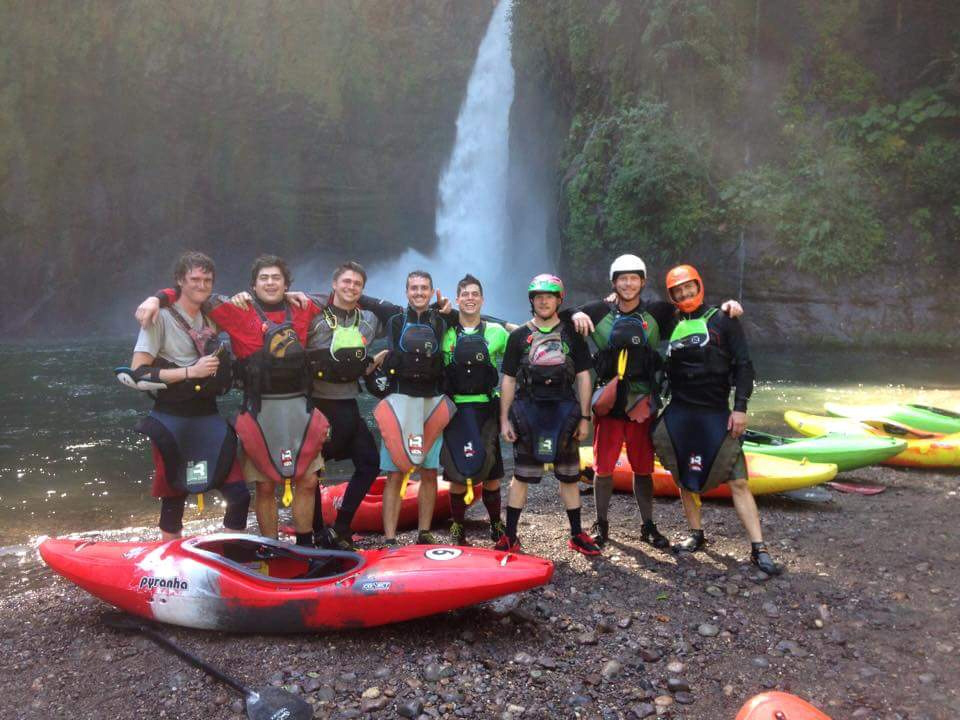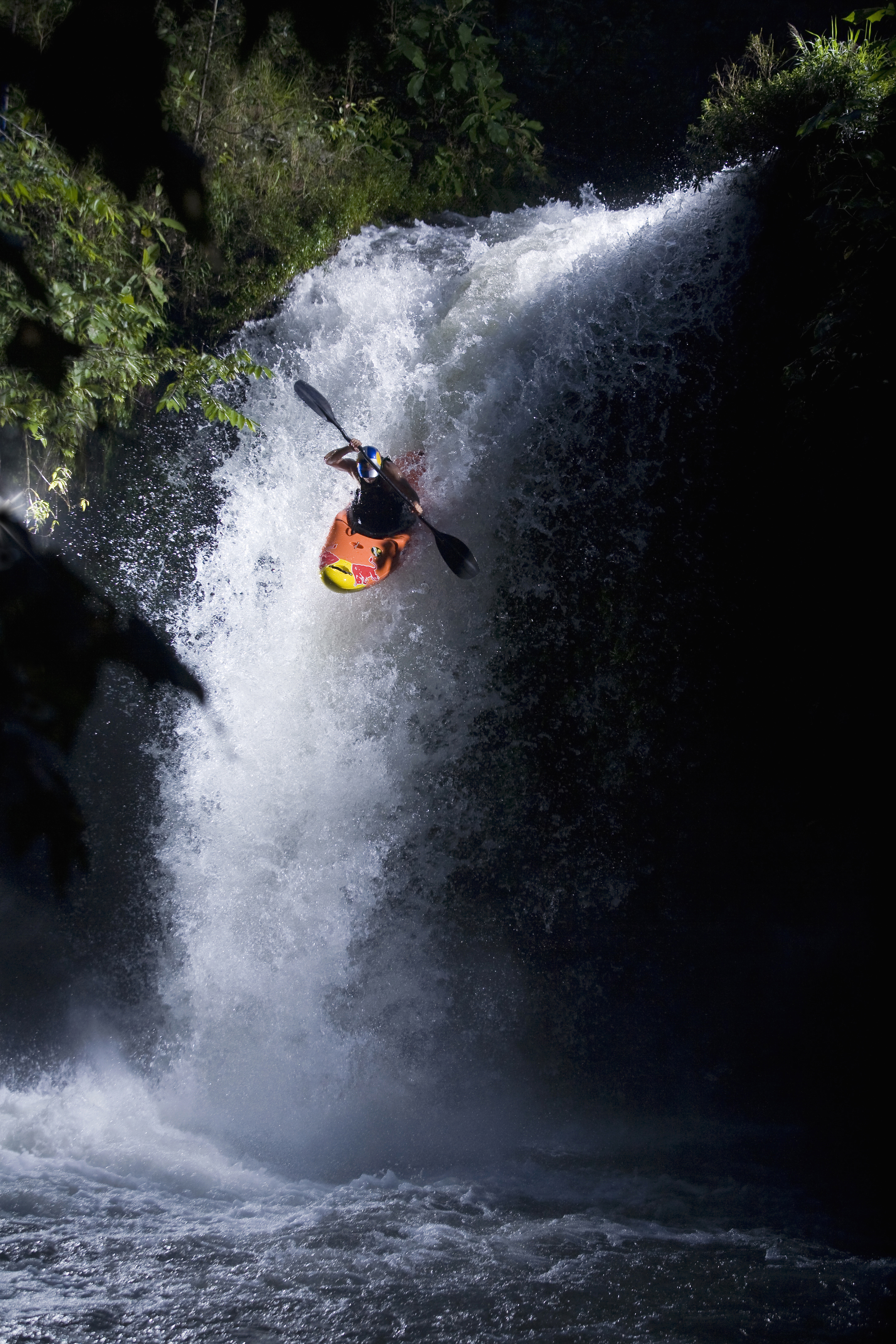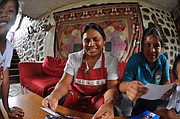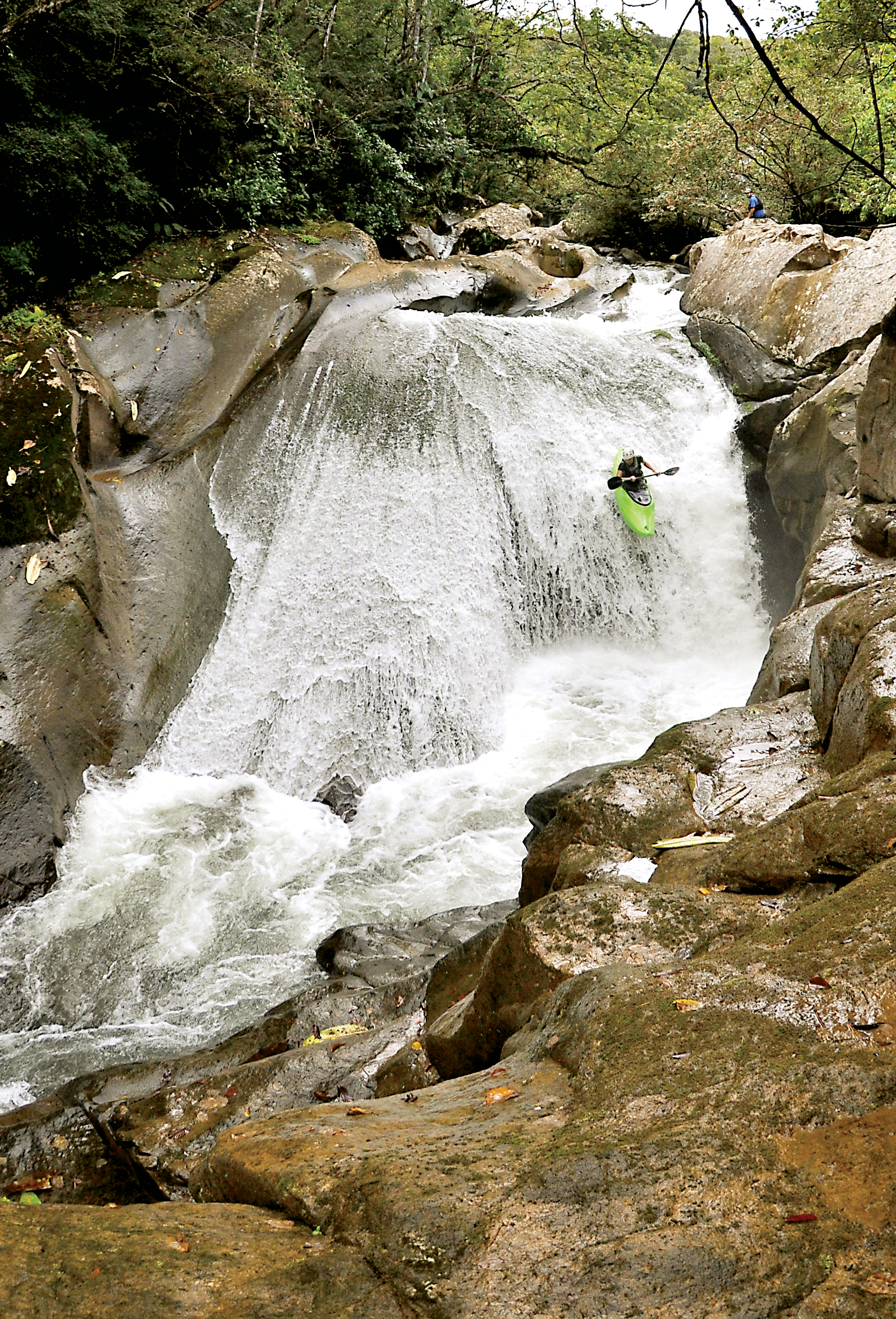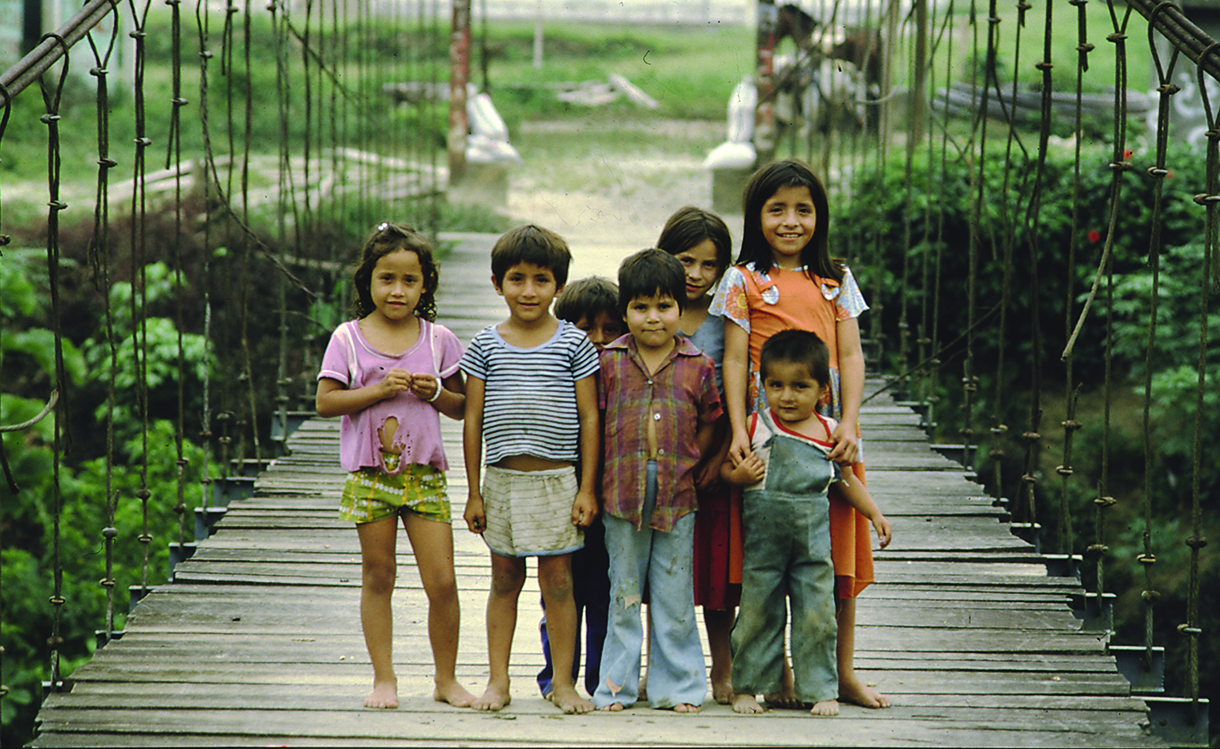With near-perfect paddling weather year-round and dam-controlled rivers keeping water levels predictable, it's no secret that Chattanooga is a whitewater junkie's wonderland.
But not even the Scenic City can satisfy every paddler's needs.
For those chasing picturesque backdrops, there will always be another geological marvel to explore. For those who wish to be tested, each new river has alluring challenges in store.
While spots like the Colorado River might already occupy a slot on your bucket list, local paddlers say there are also more than a few destinations beyond U.S. borders that demand your attention.
We asked a few of those travelers to share the motivation for their voyages, as well as a few tips to help you embark on an international adventure of your own.
ECUADOR: "A whole different experience"
Zach Bopp and James Eubank can't help but slip into a trance while describing their time on the rivers of Ecuador. From their shared office at Outdoor Chattanooga, the duo gazes out the window as they relive shared scenes from their separate South American getaways late last year.
In faraway voices, the paddlers paint images of one river's warm, blue water, its depths littered with a seemingly endless stack of round stones smoothed by time.
"It's like if you went to Home Depot and you bought 10 million bags of the roundest rocks you could find and just poured them to make a river," says Bopp. "That's how it looked."
Next, the travelers turn their minds from the river to the lush, mountainous jungle on the banks, teeming with life. They recount monkeys dashing among the leaves, parrots soaring in the breeze and strange yellow fruit dangling from the canopy, which Bopp and his travel companions picked and ate while paddling along the Upper Tena River.
When night falls, the river comes to life with the symphony of nature, Eubank says. He closes his eyes in an attempt to recall the sounds from the night he spent camped out along the water during the latest of his three trips to Ecuador last year.
From his camp, he could hear frogs croaking, toucans calling and insects buzzing, while the sound of rushing water lulled him to sleep.
"It's foreign," Eubank says. "You don't come home and hear these noises."
It isn't just sights and sounds, Bopp adds. Kayaking on Ecuador's rivers is different, too.In the Southeast, it's common to find rapids separated by stretches of calm water, Bopp explains. In Ecuador, however, he found that the steady gradients kept the rapids much more consistent.
"You might have a section that's 9 miles long and there are rapids for the entire way," says Bopp. "I spent eight days there and I got on a different river pretty much every day, and [several sections] had that same consistent nature."
Between their descriptions, Bopp and Eubank make mention of all the other foreign pleasures that made their trip memorable: the friendships they developed with locals, the new foods they were able to sample and the new culture they had a chance to embrace - all of which were amplified by the ability to engage in the sport they love.
"It's really an awesome experience," Eubank says.
Bopp agrees. "It's definitely worth going back."
The Price to Paddle
One of the features that makes Ecuador such an attractive destination for paddlers is its affordability. Bopp bought his plane ticket for under $500, and fellow Outdoor Chattanooga paddling enthusiast Terri Chapin says she spent a total of $1,300 during her entire two-month trip. Comparatively, the cost for a plane ticket to Chile, another paddling mecca, starts around $1,000.Here’s a quick breakdown of some of the expenses to give you an idea of what your trip to Ecuador might look like financially.$7: Amount Bopp spent on 120-mile bus ride from capital city Quito to Tena, where he stayed$13: Cost of 130-mile bus ride from Nashville to Chattanooga$12: Amount Bopp spent for an “expensive” steak dinner at a restaurant in Ecuador$50: Average cost of a steak dinner at one of Chattanooga’s high-end restaurants$10/day: Total amount Bopp and companions spent to rent a cab to get to rivers in Ecuador$17/day: Cost to rent a car when traveling to paddle in Colorado (plus additional $17/day if you rent a second car to park at the end of your run)
MEXICO: "A waterfall kayaker's paradise"
Cole Henderson had dreamed of riding Mexico's famed whitewater long before he stepped foot over the border in 2015.
Since beginning his paddling career 10 years ago at the age of 16, the Chattanooga native has been entranced by videos of the country's massive canyons, whose towering walls spout water like fire hydrants from incredible heights.
"It is a waterfall kayaker's paradise," Henderson says.
Though none captivated him as much as the infamous Silencio. Located on the Big Banana section of the Alseseca River in Tlaxcala, Mexico, the challenging 35-foot plunge is known for its tight entrance and the tricky maneuvering paddlers must pull off to avoid a cave at the base of the falls.
After flying to Mexico City and riding a bus six hours to a little city called Tlapacoyan, Henderson and his two travel companions spent four days of their eight-day trip scouting the waterfall - which turned out to be an adventure itself.In order to properly survey the falls, the paddlers had to toss their kayaks off a 40-foot ledge into the pool below, then cliff jump in after them.
"It's not an easy thing to do," Henderson says. "It's still pretty challenging to just jump off this cliff."
But after years of anticipation, he was determined, and after watching a few other paddlers run the waterfall, Henderson decided it was finally his turn to give it a go.
He ran the lead-in rapid and made sure to position away from the cave, but while trying to angle the front of his kayak down the falls, Henderson found his boat flattening out.
Within seconds, his kayak forcefully belly-flopped into the water below, and Henderson's head slammed into the cockpit of his boat.
Disoriented but alive, the paddler made his way from under the thundering waterfall, successfully avoiding the cave, only to find a half a dozen faces watching him with shock and concern. For a moment, Henderson was confused. Then he saw the blood dripping onto his life jacket.
When Henderson took off his full-face helmet, he realized that the impact had busted the bridge of his nose wide open.
As his companions crowded around to examine the injury, trying to determine if his nose was broken, Henderson let out a laugh. He felt only triumph.
"I busted my nose, but I made it to the bottom, and looking back up at that thing, I didn't have any regrets," he says. "It was very intimidating but very rewarding to accomplish a goal I had set my sights on years before that."
Dude, Where's My Kayak?
Getting equipment through airport customs might not be too difficult, but sneaking a 9-foot kayak on board might be a different story. Here are a few options to consider:1. Call the airline ahead of time or visit its website to find out if it accepts kayaks and canoes and avoid an awkward encounter at check-in. You’ll want to learn the airline’s policy on sporting equipment, oversize baggage and associated fees before you step foot in the airport.2. Since several airlines don’t allow kayaks, Eubank has gotten through by being a little cryptic about the contents of his baggage. Instead of using the word “kayak,” he’s told service agents that his large, tarp-wrapped luggage contains a “personal watercraft” or a “surf ski.” So far, he’s gotten away with it, but you might want to have a backup plan ready if you decide to give the strategy a go.3. While you could always rent a boat at your destination, Fields says a cheaper option might be to bring your own boat, then sell it to the hostel before you fly back home. The method avoids daily rental fees as well as oversize-baggage fees for the flight home, all while providing boats for future visitors.
PANAMA & INDIA: "The thrill of expedition"
When Mary Katherine Fields and her classmates traveled to Central America in 2012, they didn't cruise down the famed Panama Canal or set their sights on any of the other hotspots heavily trafficked by visiting kayakers.
Instead, the Baylor School students bushwhacked their way through the remote Panama jungle with boats hoisted onto their backs in search of the run less paddled.
"I kind of like that feeling of putting in the work to get to this awesome, remote place, then paddling down what you hiked into," says Fields, now 25. "I'm sure in the moment I didn't love it, but it's one of those things you remember and look back on."
The expedition was part of Baylor's Walkabout program, which aims to help students grow by enabling them to tackle the uncomfortable through various outdoor adventures. Even though instructors from the program had scouted and mapped the destination before the trip, hiking through the pathless landscape to traverse an isolated river left Fields feeling as if the group was among the first to discover the hidden treasure."You really do feel like you're removed from the earth and society," she says.
That same sensation of exploration had crept over Fields the year before, when Walkabout had taken the students to India to explore the culture.
Along a river they traversed during their time in the South Asian country, Fields had spotted no other recreational boaters. What she had seen, however, were stray dogs running beside the water and villagers washing their clothes along the banks.At put-ins and take-outs, children from the village would flock around her kayak, eager to touch the strange plastic vessel. Their fascinated expressions had, again, left Fields feeling as if few other kayakers had voyaged through the community's waters.
In the years since graduation, Fields' love of the sport has taken her to Chile for further adventures along foreign waters, but she has yet to once again toss the guidebooks aside to explore uncharted territory.
Still, the spirit of expedition burns bright within Fields. Perhaps it's why she is now the first and only female to ever descend DeSoto Falls.
"I just like to push my limits, just to see what I'm capable of doing," says Fields, who spent two years studying the 70-foot Alabama waterfall with a group of male friends who planned to descend it. Ultimately, Fields decided to attempt the run herself.
Today, her passion for exploring uncharted territories is still strong, and she hopes to some day tackle the same kinds of expeditions as a few of her friends, who have turned their attention to Alaska, where there are a number of rivers accessible only by helicopter or plane.
"There are probably thousands of rivers in the world that have not been discovered," she says. "There is so much left to do."

